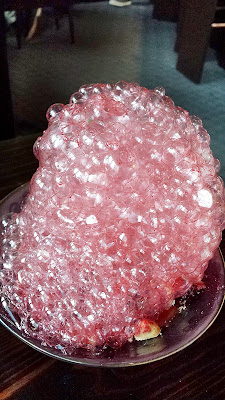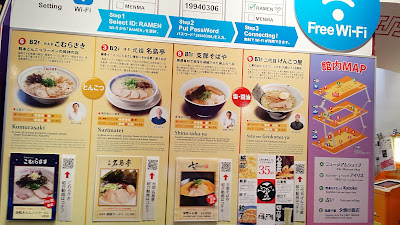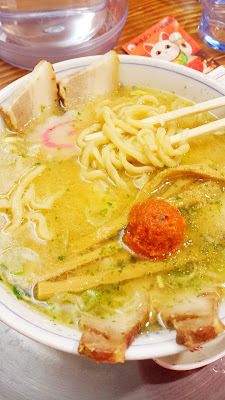Muselet has closed
In the South Waterfront, a restaurant named Muselet (a muselet is the wire that holds the cork and that you twist off to open a Champagne bottle – it’s pronounced “Muse-LAY”) opened in May last year, and has been a hidden dining destination gem. I felt like it was my duty to share this secret with you.
While Muselet may or may not be new to you, it has already racked up many awards by those who are in the know. It is listed on OpenTable’s online reservation site by diners as among the Top 10 Best Overall Restaurants in Portland as well as Top 10 Best Service in Portland and Top 10 Best Ambiance in Portland. You know they are serious about wine as soon as you walk through the front door and see this gorgeous light fixture and all those wine glasses all lined up for service that night…


And then there’s this:
Foie gras terrine, apple, salted brown butter, ginger tuile
When I first saw the above dish of Foie gras terrine, apple, salted brown butter, ginger tuile get set down, I wondered if it was dessert, it was plated so beautifully. But then when I took that bite and got all those flavors… Well, it’s still wonderful enough for dessert in its decadence and creamy texture that brings together rich savory with a hint of sweet. I loved the additional textures bringing an extra level to this dish. In fact it’s actually on the dessert menu too, not just the dinner menu. It’s so rich, and so perfect with a flight of sparkling… You will feel like a million bucks.
Meanwhile, the #1 reason to rush down to Muselet ASAP right now – RIGHT NOW – is the Porridge with warm yolk, trout roe, and chive. Ron recommends pairing it with options such as Alsatian Single Vineyard Riesling, Domain Picq Single Vineyard Chablis from Bussieres in Burgundy, or Martino 2011 Old Vine Pedro Ximenez Blanc from Mendoza, Argentina. All sounds like win to me.

As soon as I saw porridge on the menu I thought “how ballsy, they are offering porridge as a restaurant dish”. But those who have experienced know it’s a home run and a must not miss dish. It’s a striking marriage of Muselet Owner Ron Acierto’s nostalgia for his Filipino roots of bone-warming heartiness and Executive Chef Greg Zanotti’s take of modern and eclectic, combining classic technique and progressive preparation with art of plating.
But, it’s only available for a short period of time – Chef Greg warns he’ll pull it off from the menu as soon as the weather is better because it’s too rich for the sun. So hurry in while it’s on the menu right now.
Not only that, for the month of March 2016 only for Portland Dining Month, they are offering a jaw dropping dinner option for the $29 – but instead of 3 courses you get 6 dishes! You can also add wine pairings for your courses for an additional $25. Their Portland Dining Month menu just for March includes
- steelhead beet, brassicas, orange
- pear burrata, kale, arugula, pecan-pistou


- bread alex’s parker house rolls, house cultured butter, maldon
- charcuterie chicken liver mousse, cotechino, mustard, pickles
- beets feta, yogurt, fermented garlic
- pork coppa wild onion, hop aioli, leek fondue
I tell you, that list of six dishes for that price is a heist you should check out. But come hungry, and even with the Portland Dining Month menu, you should get that porridge while it’s in season. Somehow, even though you are getting six shared courses for the bargain price of $29, I think you will rise to the challenge of eating that porridge after you try your first comforting spoonful.
And, somehow still also save room for dessert: oh, this gorgetous, fun dessert. Everyone will jealously turn and wonder what you are enjoying, and they SHOULD be jealous of this Goat’s Milk Custard with streusel, wild blackberry, and cajeta. This dessert is also just simply known as Bubbles. Ron explains the dish was invented because he “In the beginning, I asked Greg to create a dessert that was quirky, delicious and would make guests smile. This one is like fireworks for your sweet tooth. It’s funny, the recipe is running in a future ‘1859’ magazine issue… it calls for ‘a small aquarium pump.’”


A look when first placed on the table and basically 60 seconds later after the first photo was taken under the bubbles….
If you return after Portland Dining Month, besides the porridge and Bubbles dessert (and perhaps the foie gras either as appetizer or dessert…), you might consider splurging on the Wagyu Culotte with short rib and mushroom duxelle. This dish is perfectly cooked meat butter, tender without being too fatty. Paired by Ron with 2007 Hawk’s View Cellars Pinot Noir, the pairing is fit for royalty – seriously it wouldn’t look out of place as the dinner plate while in a ballgown and wearing diamonds.
There are multiple options in Portland for oyster, but Muselet sets apart their oyster dish with its half a dozen shigoku with blood orange mignonette that you can enjoy with champagne or sparkling – such as Maysara Pinot Noir Brut Rose. Little trivia: Muselet was the first to pour Maysara Winery Pinot Noir Brut Rose in the area, and the wine is only available at the winery for their wedding events.
Definitely get a sparkling wine when you visit – or any wine. Wines are a huge draw to visit Muselet, since it is listed as one of Wine Enthusiast’s 100 Best Wine Restaurants in America for 2015, is one of the Oregon Wine A-List Award winners 2016 and is rated on OpenTable’s online reservation site by diners as among the Top 10 Most Notable Wine Lists for Portland / Oregon.
The Muselet wine list features 50+ Champagne (small production ‘grower’ wines) and sparkling wines, local urban wineries, and many Oregon Pinot Noirs. They offer a rotating selection of over 30 wines by the glass and more than 300 by the bottle, as well as numerous wine flights. Any wine by the glass can also be ordered as half glass, so you could make your own flight or ask Ron to pair with whatever you’d like.

Ron has been developing friendships with winemakers and producers in the Willamette Valley since 2004, and expanded during his past experience managing restaurants with relationships with wine sales reps, importers and distributors.
“The key for me is to truly understand their vision and passion, and to show them the respect I have for their product. I get really excited and I love introducing guests to wines that have been made with passion, where the winemakers are caught up in the romance of their craft. It’s been fun to get to know the winemaking sons and daughters of the ‘Papas of Pinot’ who started it all.” says Ron.
The payoff for you as the customer is access to some wines that are exclusive just to Muselet, or that somehow Ron found that are local and super small that you might not find them anywhere else.
Domaine Drouhin only started making Pinot Noir Rose for their tasting room in 2010. Their production is so small, their distributor is only able to place it selectively because there is not enough wine for a public release. There are only 2 cases left of the 2014 and it is only available at Muselet.
In fact, at Muselet they hold weekly complimentary no purchase necessary wine tasting series in their lounge every Saturday from 5 – 6:30 PM. A winery expert will be on hand during every tasting to answer questions about each wine. The featured wines will be available for guests to purchase by the glass to enjoy at the bar, purchase a bottle to take home, or can be enjoyed as a custom wine pairing with their meal. The current upcoming schedule includes
- March 26 Fullerton Wines: Distinctive Pinot Noirs and Chardonnays.
- April 2 Owen Roe: Riesling, Pinot Gris, Chardonnay, Oregon Pinot Noir, Washington Red.
- April 9 Le Cadeau | Exclusively estate grown Oregon Pinot Noir, Pinot Gris, and Chardonnay
Aubichon Wines | Oregon Pinot Noir, Pinot Gris, and Chardonnay - April 23 Ian Burrows of Consulon Wines | pouring wines from Boulay Wine Company, Swick Wines, and Guillén Family Wines
- April 30 Jackalope Wines | Craft Nortwest Pinot Noir, Viognier, and Cabernet Franc
Helioterra | Pinot Noir, Mourvédre, Pinot Blanc, Syrah, Arneis, Melon de Bourgogne, Rosé of Pinot Noir, and Riesling - The schedule will continually be updated and can be found at Muselet’s website
Ron explains “We like to think of ourselves as the ‘concierge of the Oregon wine country.’ We are able to customize wine pairing perfectly for every dish, plus provide some unknown wine varietals for non-traditional wine pairings. Imagine, instead of having to choose one or two bottles of wine for a meal, you can have a small pour of the wine that perfectly complements your dish.”
Here’s a look at a few other dishes on the current menu, which will change seasonally:
- Beef tartare remoulade, dulse, vinegar chip (part of their bar/soirée menu which is what they have dubbed happy hour, available in the bar/lounge only)
- Mille Fuille with creme, dulse, smoked cod
- Cured Hamachi, pea, hibiscus, avocado. I marveled at every bite of that dehydrated yuzu (tofu skin) with pea in how it was a perfect addition of subtle flavor and great texture to go with that hamachi – I even was trying to separate it from that photogenic hibiscus sauce to try to focus on the perfect hamachi and yuzu pea combo.
- Turnip with beurre monte, pickled shallot, trout roe, sake lees
- Sunchoke with mole poblano, persian cress
- Scallop with pork rind and red eye gravy

So I think you’ve gotten the gist here: spectacular food and wine. But did you notice I mentioned feeling like a million bucks, or feeling like royalty too? That’s because the biggest impression I had from Muselet is white glove service without the formality but all the elegance and class. Ron is incredibly enthusiastic about the dining experience, and he knows it includes what is on your plate and in your glass, but also beyond that in how you are treated from start to finish.
The people at Muselet are dedicated to making each guest feel like a VIP, and genuinely want to welcome you the moment you step in, take care of you with an eye on every detail, and make sure you know you are valued and that you leave happy. You’ll feel like you had a high class dinner but everything is approachable and without the matching high class price tag. In a city where service is often casual, it’s feels so special to be pampered like at Muselet.
Which of these dishes at Muselet is attracting your eye?
Disclosure: I attended a complimentary shared blogger meal, but I also returned on my own and on my own dime. I will always provide my honest opinion and assessment of all products and experiences I may be given. The views and opinions expressed in this blog are entirely my own.






















